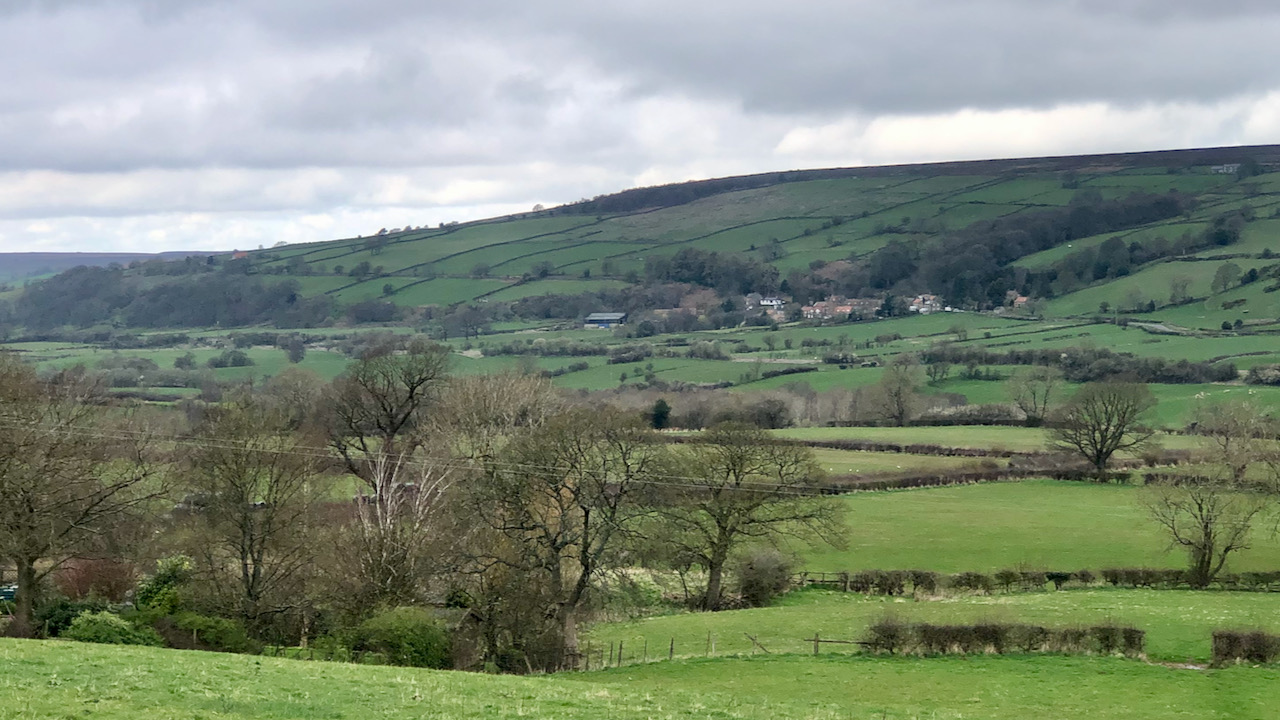Houlsyke has lingered in my thoughts as a subject worthy of a post for some time, a hamlet steeped in history1Houlsyke village NYM HER No: 4615.. Yet, despite its tranquil demeanour, it lacks a photogenic charm. Devoid of a defined centre, bereft of an inn or shop, it comprises merely an assortment of cottages, both old and modern, clinging to the road between Danby and Lealholm, and the ubiquitous line of parked cars.
So I settled for a distant photo of the village across the flat expanse of the Esk valley.
In past times, it once served as the focal point of commerce in Eskdale, experiencing its heyday between 1860 and 1865. The endeavours of two families, the Smiths of James and Joseph lineage, were pivotal in the establishment of a formidable enterprise dealing in pork, lamb, and wool2Burns, Tom Scott. “Round and About The North Yorkshire Moors: A Glimpse of the Past”. Page 11, M.T.D. Rigg Publications. Reprinted 1989..
Vast quantities of salted and cured bacon were transported by horse and cart mainly to Whitby, from where they were shipped south to London. The place where most transactions took place was The Fat Ox inn.
The coming of the railway, initially from Pickering to Grosmont in 1836, facilitated the transportation of substantial shipments to the capital3‘Esk Valley Line’, Wikipedia (Wikimedia Foundation) <https://en.wikipedia.org/wiki/Esk_Valley_line#cite_ref-8> [accessed 29 March 2024]. Nonetheless, a significant portion of trade still found its way to the northern market towns via wagon.
After 1865, the trade experienced a steady decline, because of the importation of foreign pork and the demise of the illustrious Smith families.
When this trade was active, Houlsyke boasted its own Sunday School, village shop, blacksmiths, and joinery. It was bustling with activity, a stark juxtaposition to the placid ambience that now prevails.
- 1Houlsyke village NYM HER No: 4615.
- 2Burns, Tom Scott. “Round and About The North Yorkshire Moors: A Glimpse of the Past”. Page 11, M.T.D. Rigg Publications. Reprinted 1989.
- 3‘Esk Valley Line’, Wikipedia (Wikimedia Foundation) <https://en.wikipedia.org/wiki/Esk_Valley_line#cite_ref-8> [accessed 29 March 2024]

Leave a Reply